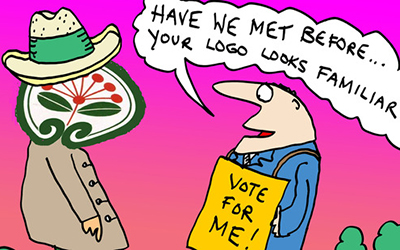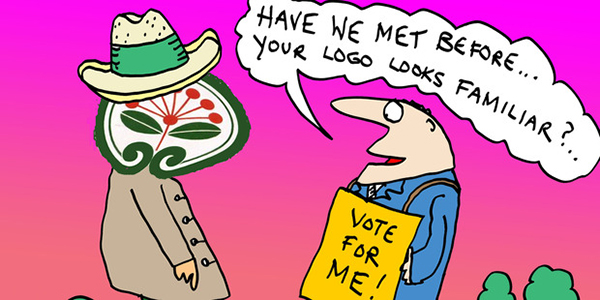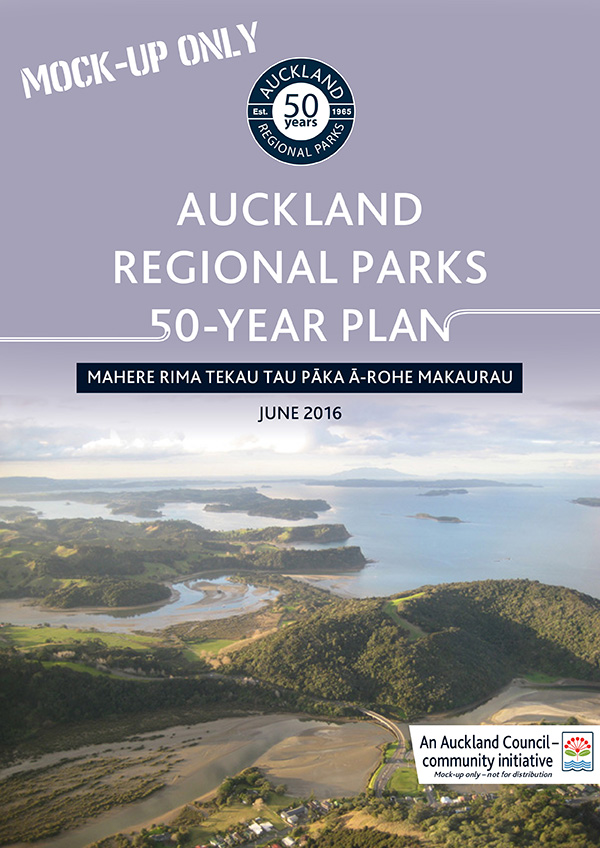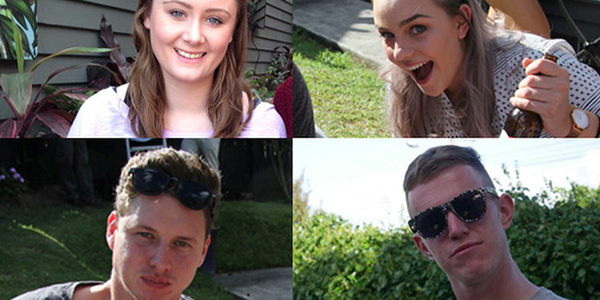Mahurangi-initiated 50-year plan hit by mainstream media


Regional-Parks-Free Zone: Given how highly Aucklanders value them, it is indication of just how much work remains to be done that the major contenders for the Auckland mayoralty make rates their top priority, and regional parks network no priority at all. cartoon Peter Bromhead New Zealand Herald
Dr Ronald Locker had suggested it as a national park.
It was 1973 when he suggested the creation of a national park to protect his beloved Mahurangi Harbour, in Seacoast in the Seventies, which he co-authored with Professor John Morton and David Thom cbe.
What Locker, author of Jade River : A History of the Mahurangi, had been slow to appreciate, was that, for 10 years, a far more readily deployable instrument had been available to protect coastline such as that of the Mahurangi, from coastal settlement. In 1963 the Auckland Regional Authority Act was passed, providing the first regional-governance teeth, and, crucially, the specific powers to purchase land for regional parks.
So at the time Locker was agitating for a Mahurangi national park, the good work the Frederick JonesAuckland’s first regional planner and Judge Arnold Turner had commenced at Wenderholm had been extended to safeguarding Te Muri and the heads of the Mahurangi Harbour. Tragically, a too-little-too-late 1990s interest in the McElroy estate allowed it to be subdivided, completing the 1950s misstep by the Rodney County Council, when the gift of the peninsula received such a churlish reception that it was eventually withdrawn by the civic-minded McElroy brothers.
Astoundingly, considering how unequivocally enthusiastically Aucklanders responded to their first ‘modern’ regional park—Wenderholm—the new Auckland Council has not used the network as an exemplar of the best that regional governance can bring. In the backlash against the regional council tier under which the various city and district councils had bridled, there was even a concerted move to expunge the word regional, from the network’s title. But worse, by 2015, there was a nil acquisition budget, and zero prospect of regional parks continuing to be purchased and added to the network at the first 50-year average rate of one every other year.

When it’s Okay to Mock: Although it can only ever be supposition, it is likely that this mock-up of how a collaborative community–council regional park 50-year plan might look did much of the heavy lifting involved in selling concept. The objective was to for Auckland Council to have a plan for the future that did justice to the regional parks 50th anniversary, celebrated this last summer. The agreed way forward is now for Auckland Council to produce a strategic plan for the regional parks network, and an acquisition strategy, informed by the document the community developed, with council help, inspired by the mock-up. mock-up Mahurangi Magazine
Almost exactly a year ago, the Mahurangi Magazine decided that the occasion of the 50th celebrations of the regional parks network was too good an opportunity to let pass, and pitched the concept of a collaborative community–council regional park 50-year plan to Councillor Christine Fletcher, chair of the parks, recreation and sport committee, who invited the council officer who, as luck would have it, has since been made Auckland Council’s parks czar. Councillor Fletcher was immediately supportive, but also cautioned that the council at large would not necessarily share the vision. Friends of Regional Parks, however, had no hesitation, and adopted and prioritised the concept. But most significantly, a raft of other organisations signed up to, and contributed to, the project, so that by the time the 50-year plan was presented to the committee last Wednesday morning, it was representing the aspirations of more than 30 000 members.
But, as Brian Rudman states in the New Zealand Herald, a week after the event:
…the future doesn’t look that good. Neither mayoral front-runner Phil Goff, nor his main rival, Vic Crone, bothered to even return the questionnaire on regional parks the Friends asked candidates to complete.
The regional parks don’t feature in Goff’s campaign promises, apart from a pledge to sustain and protect Auckland’s ‘beautiful natural environment.’
While most of what Rudman asserts about Auckland Council’s failure to prioritise regional parks can’t be disputed, the Mahurangi Magazine has an entirely optimistic view of the network’s prospects, based on two things: Glimpses of the future evident in the approach of the council’s compact, high-powered team responsible for a potentially game-changing regional programme of paths and trails; and glimpses of just how powerful a coalition of park users could become. The coalition, apart from supporting Sydney Harbour Federation Trust-type development, which has produced a self-funding network of parks, could punch even above its numbers by subscribing to a perpetual acquisition fund, which leveraged corporate and other philanthropic funds, which leveraged council funds, which leveraged government funds. Each affiliated member would have the satisfaction of seeing maybe $20 per year leverage a fund that could purchase a $16 million property every other year.
The only response that was indispensable, to the concept of a collaborative community–council 50-year plan for the regional parks network, was council buy-in. In the event, although council feedback was incorporated into it, all parties agreed that the document should be submitted as the community’s aspirations for the next 50 years, and that it was Auckland Council’s job to respond to it, by producing the strategic plan it had earlier undertaken to do, and to update its acquisition policy. Auckland Council has offered to involve the stakeholders in this work.

Slow on the Uptake: While the attention of the mainstream media is very welcome, the New Zealand Herald has been slow to cover the two-woman young-candidate phenomena of this year’s election. The newspaper’s 23-page election guide failed to feature upstart Chloe Swarbrick, despite giving serial pretenders a platform for their valueless candidacies. New Zealand’s biggest daily could, if it is genuine in its concern for low levels of youth engagement in local body politics, immediately begin making amends, by supporting a national campaign to immediately have all year-7-onwards students participating in Kids Voting. image New Zealand Herald
Otherwise, as utterly welcome and necessary as mainstream media coverage of the 50-year plan is, Rudman’s article paints an indulgent them-and-us picture of the document’s protagonists and the council. This does an injustice to the collaborative relationship that is being built, as is exemplified by Auckland Council’s decision to keep Te Muri car-free forever. Nor is the clever reference to Pol Pot remotely more acceptable than would been one to Adolf Hitler. Year One would have made a better reference, given that, 224 years on, the trauma in France cannot be as raw as that dating only from the carpet bombing, and genocide it unleashed, in Cambodia 37–47 years ago.
Mayor Len Brown does however have a lot to answer for, by bringing the Auckland Council into disrepute, and saddling the city with an excruciatingly extravagant 1950s transport solution when far smarter, proven options abound. The bareness of the cupboard he has left, leaves even the front-running, Labour Party mayoral candidate campaigning on fiscal probity, with no mention of the regional parks network, much less the aggressive expansion of it, to cope with, as Rudman reports:
…422 000 new dwellings over the next 25 years—close to doubling the number of existing dwellings built over the past 170 years of settlement.
Elsewhere in today’s New Zealand Herald, Tessa Berger, who is a Friends of Regional Parks committee member, and by a margin of a quarter of a century its youngest, is quoted in an article on youth disengagement from local body politics:
From its 2007 inception, the Mahurangi Magazine has styled itself:
… part of a hope-based network restoring and enjoying the Mahurangi.
And, climate-action willing, never has the future of the Mahurangi, and the next 50 years of the regional parks network, looked more hopeful.

Good reading and agree that a more collaborative approach is needed. However, the charity/NGO approach has limits. In the end, government has to act, and massive changes are needed in the planning, provision and care of all our parks. Just submitted this letter to the New Zealand Herald:
Loving the positivity.
All too often, we let our aspirations be confounded by naysayers—often from our own erstwhile ‘side’.
In fact, I’ve sometimes thought that the best propagandists against so-called left-wing aspirations such as being clean, green and not mean are left-wingers, whinging about how awful things are, how little things change, and how impossibly large are the challenges.
While possibly accurate, such undiluted negativity can also be viewed as defeatism. When what we need is more victoryism! Funny how that’s not even a word.